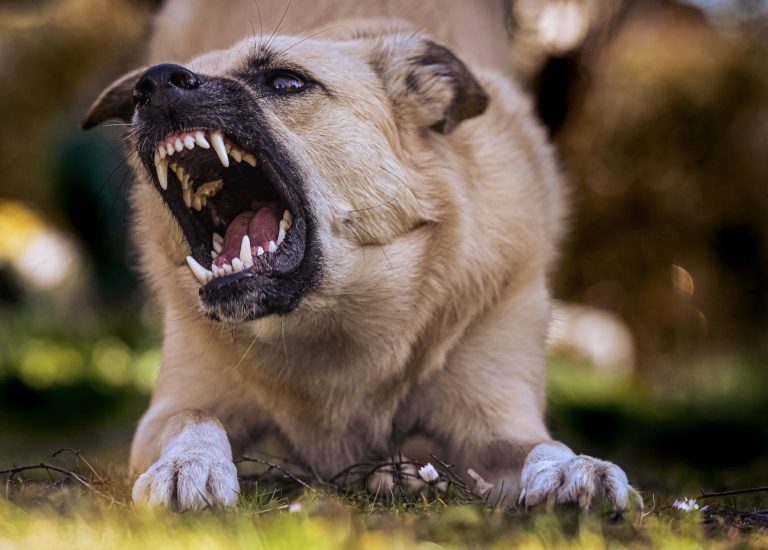Who are the most aggressive dog types? How can you properly identify an aggressive dog? Do all dogs carry an aggressive gene in them? And what is the difference between an aggressive dog, a fearful dog, and a dominant dog? That is what we will try to discover today.
According to the Centers for Disease Control and Prevention and the Humane Society of the United States, there are 4.7 million dog bite attacks in the US. Some of these dog bites result in fatalities. And not all of them are the result of an aggressive dog breed.
You might be surprised, but even a Labrador Retriever or a Golden Retriever might act aggressively. All dogs have a threshold that if you pass, they might react.
There are many ways to identify an aggressive dog, but the most reliable is to look at its posture. That means tense, stiff, or guarded body position. It is a sign of a dog that can be fearful or angry. Also, look at the dog’s facial expression and body posture.
Dogs Breeds Often Labeled as Aggressive
I want to get this out of the way. Yes, some dogs fall into the category of aggressive dog breed. But we should not label dogs as such. For example, pit bulls are often considered some of the most aggressive dogs.
But it is a reputation we have given to the dog. This might come as a surprise, but a Jack Russell terrier has a stronger jaw bite than a pit bull.
So, with that in mind, any dog breed can have aggressive behavior if not socialized properly.
Because we often say some dogs are aggressive, the American Kennel Club has come up with breed restrictions. Case in point, pit bulls have been banned in some of the big cities in the US, through Housing Authorities.
The breeds often labeled as aggressive include Akita, American Staffordshire terrier, American pit bull terrier, Cane Corso, Chow Chow, Chihuahua, Doberman Pinscher, German Shepherd, Rottweiler, and Siberian Husky.
Now, how many of the breeds on that list surprised you? I can honestly say that Chow Chow, Siberian Husky, and Chihuahua were a surprise for me. Yes, Chihuahuas are known to bark at everything and anything, but aggressive? Common!
Difference between an aggressive dog and a dominant dog
If not properly socialized by its dog owner, any puppy can show aggressive behavior. But we have to make the difference between dog aggression and dominant dog.
It is a common question that many experienced dog trainers might even struggle with. But generally speaking, a professional dog trainer will make the difference between an aggressive dog, a fear-biter, and a dominant dog. These are all different behaviors, but often, we call them all, aggressive behavior. Here is the difference.
A fear-biter will be calm when everything is calm around him. He might bark in long strings of warning if something or someone novel comes up. And he will then bite if the warning didn’t work. So, this dog will not jump at you. He will only defend himself if you ignore his warning. A fear-biter dog needs slow desensitization, exposure to novelty, and good socialization.
With proper structure and firm direction, this dangerous dog will be a joy to be around. Getting mad at him will only make things worse. This is why you need proper dog training. Simply put, fear biting dogs are dogs that react when they become fearful or scared. They can be sweet and submissive, but when panic sets in, things escalate.
And what I have to stress is that many of these dog bites are the fault of the human involved. If the dog appears timid, shy, or nervous, it is not wise to provoke and push yourself into his comfort zone.
Fearful dog body language:
- Tucking in his tail
- Turning his head away
- Avoiding eye contact
- His ears may become flat against his head
- Hunching or crouching down
- Some dogs might tremble
- They might growl when you approach
A dominant dog is something else. It is a dog who considers himself the alpha of the world. This dog might be delusional, but it will try to enforce its rules on dogs and humans alike. I can vouch for this, Milo has a dominant personality, and he tries to push his limits every single day. If you give him an inch, he will gladly take over the position.
This dog is not afraid of anything. Another case in point, Milo is a Jack Russell terrier, but he will not back down to a mastiff, German shepherd, or any other dog. He is a small dog, but with a big personality. Chihuahuas are the same.
Dominant dog body language:
- A dominant dog has a strong and positive body position
- He displays signs of alertness like rigid muscles and tail
- Raised fur
- Closed mouth, sometimes accompanied by a soft growl
Sometimes, even a submissive dog might try to express dominant behavior in certain situations. For example, a playful dog like a Labrador Retriever or Golden Retriever might try to use dominant body language in its home or territory.
Finally, let’s talk about an aggressive dog. And no, we are not talking about aggressive dog types here. Any dog can be aggressive. But this dog is different from the fearful dog and dominant dog. It is a dog that bites because he likes to. He doesn’t bark, he doesn’t warn you, and he will try to fight with other dogs instantly.
Now, this dog is not an aggressive dog because he wants it. Circumstances in life have made him like that. And this might come as a surprise to you, but this dangerous dog can be managed. With a muzzle and an experienced dog trainer, you have a chance to turn things around.
Usually, aggressive dogs end up in shelters and they are in line for being euthanized. But if you look deep down, there is a reason for that aggression.







